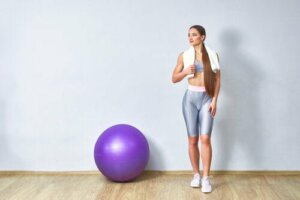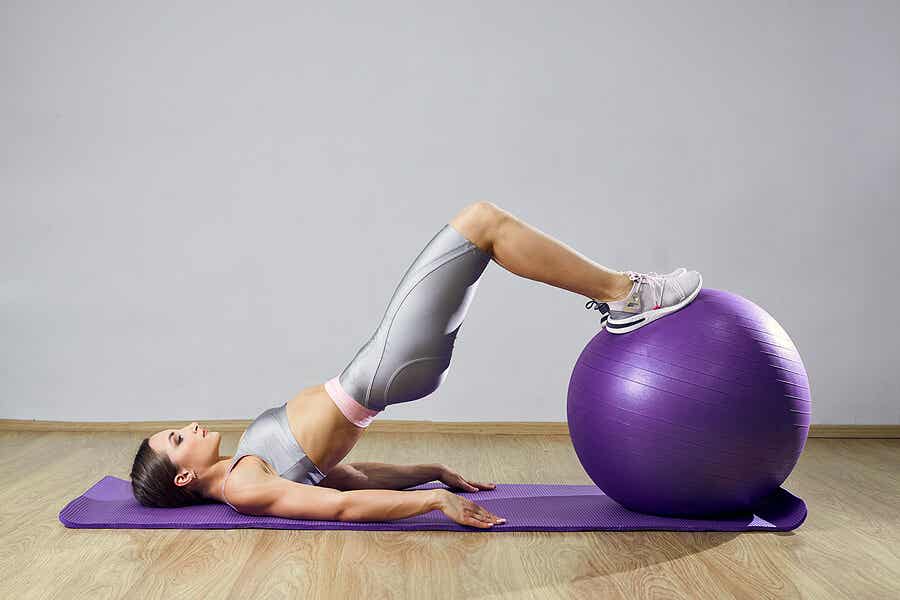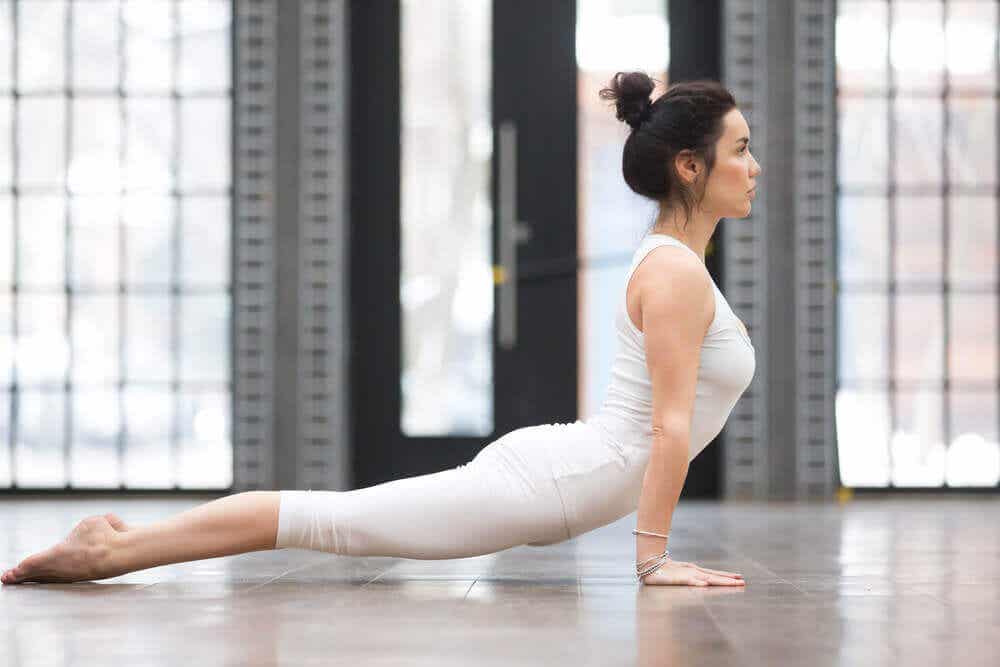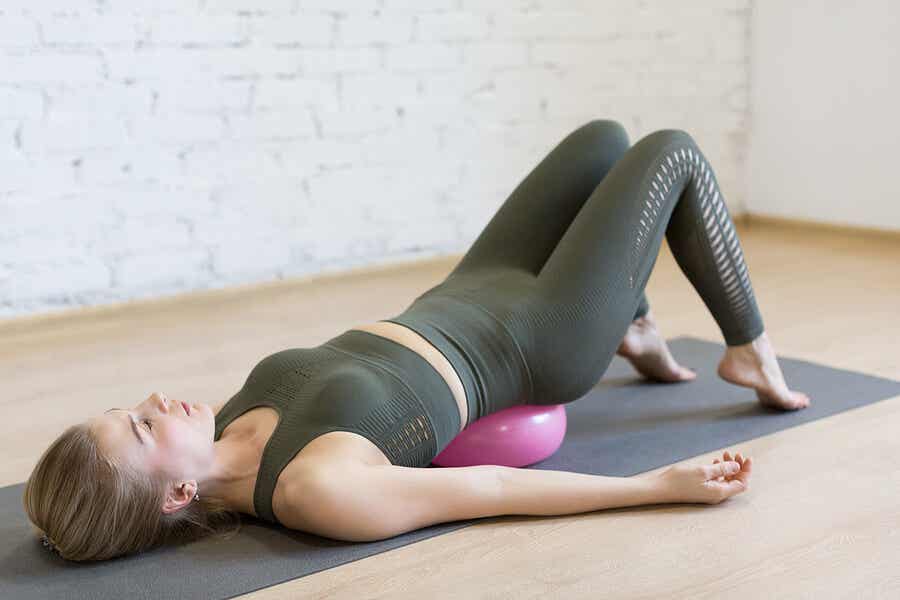6 Benefits of Practicing Pilates Every Week


Written and verified by Doctor Carlos Fabián Avila
More and more people are practicing pilates every week. What began as a way to exercise, has become an activity that benefits both your mental and physical health.
Some of the goodness that pilates provides includes losing weight, having good musculature, bettering posture, and combating nervous disorders like stress or anxiety.
In this article, we’ll go over some of the most important benefits that pilates provide, including a technique that allows you to be in shape without the risk of hurting yourself.
At the same time, practicing pilates will allow your flexibility to increase and you’ll achieve a toned figure that you’ll never want to lose.
6 Great Benefits of Pilates

1. Gradual weight loss
Pilates activates your metabolism, which is the bodily function that regulates energy use. When it’s sped up, your body temperature increases, you sweat and you burn calories. In this way, you facilitate gradual weight loss.
It’s most ideal to combine pilates with some kind of aerobic activity, such as walking, dancing, running, swimming, biking, etc.
This way, you can have good bodily balance between toning and cardiovascular exercises. This is the healthiest and most effective way to lose weight and not gain back the weight you’ve lost.
2. Tone your body without injuring yourself
Doing pilates every week is an excellent way to tone your muscles and increase your strength and resistance.
Pilates works in a complete way and targets all of the different muscles in your body. In addition, it helps create a balance between your upper and lower body, which is different from other sports.
Another huge advantage is that it also prevents injury. This is thanks to the type of exercises that it uses, with your own weight or light weight tools. It only requires light weights, elastic bands, and exercise balls of different sizes, etc.
3. Shape your body
By facilitating weight loss and toning your muscles gradually, you can shape your figure. Muscles don’t get bigger, but rather get more defined. At the same time, the flexibility and stretching exercises better your silhouette.
4. Better posture

The benefits of practicing pilates that we mentioned earlier also contribute to better posture.
Muscle toning in your abdomen is the perfect support for an erect back, and it goes the same the other way around. A strong lower-back and strong dorsals help you maintain strong abs.
Strong legs and glutes are also necessary to support your body. Your entire body functions in a balanced way.
In this sense, pilates works in a holistic way, so there’s no part of your body that is left out.
Also read: 5 Weight-Free Exercises for Your Back
5. Increased flexibility
Pilates exercises always include stretches. These are done at the beginning and at the end of your exercise routine, but they’re also incorporated in its toning techniques.
A good stretch is imperative to work your muscles in a comprehensive manner. No matter what, it shouldn’t be limited to only one stretch.
When you stretch, you’ll see that your flexibility slowly increases. This helps you prevent injury, as well as muscular and joint problems. It also contributes to better posture and a better predisposition to play any sport.
6. Stress Reduction

Pilates doesn’t only help you to lose weight, but also will help you be in shape overall. Regularly doing physical exercise provides many benefits to your nervous system. In this sense, it helps you combat issues such as stress, anxiety, and depression.
In particular, pilates requires good concentration and coordination. These two skills make you clear your mind and put your worries to the side, as well as any other burden, work problems, or family concerns, or emotional stress.
While you’re in a pilates session, your mind is focused on how your body is moving, your strength, balance, and breathing. In this way, practicing pilates is a powerful way to destress.
According to a study published in 2017, pilates is an activity that contributes to mental health. In view of this, the researchers encourage the scientific community to continue to delve deeper into the matter, in order to clear up more unknowns on the subject.
Exercise and sport are key to well-being
Marcelo Rodríguez Ceberio, clinical psychologist and researcher, says that sport contributes to well-being. Therefore, it’s worth paying attention to what he and other experts say in this regard, as they could help us feel better on a daily basis.
It’s not about making life revolve around sport or exercise, but about maintaining an active lifestyle and knowing that, just as the body needs rest and food, it also needs activity to be healthy and enjoy well-being.
All cited sources were thoroughly reviewed by our team to ensure their quality, reliability, currency, and validity. The bibliography of this article was considered reliable and of academic or scientific accuracy.
- Boix Vilella, S., León Zarceño, E., & Serrano Rosa, M. Á. (2017). Evidencias de la práctica Pilates sobre la salud mental de personas sanas. Universidad y Salud, 19(2), 301. https://doi.org/10.22267/rus.171902.92
- Caldwell, K., Adms, M., Quin, R., Harrison, M., & Greeson, J. (2013). Pilates, Mindfulness and Somatic Education. J Dance Somat Pract. https://www.ncbi.nlm.nih.gov/pmc/articles/PMC4198945/
- Forster, H. V., Haouzi, P., & Dempsey, J. A. (2012). Control of breathing during exercise. Comprehensive Physiology. https://doi.org/10.1002/cphy.c100045
- Kloubec, J. A. (2010). Pilates for improvement ofmuscle endurance, flexibility, balance, and posture. Journal of Strength and Conditioning Research. https://doi.org/10.1519/JSC.0b013e3181c277a6
- Wells, C., Kolt, G. S., Marshall, P., Hill, B., & Bialocerkowski, A. (2013). Effectiveness of Pilates exercise in treating people with chronic low back pain: a systematic review of systematic reviews. BMC Medical Research Methodology. https://doi.org/10.1186/1471-2288-13-7
This text is provided for informational purposes only and does not replace consultation with a professional. If in doubt, consult your specialist.








